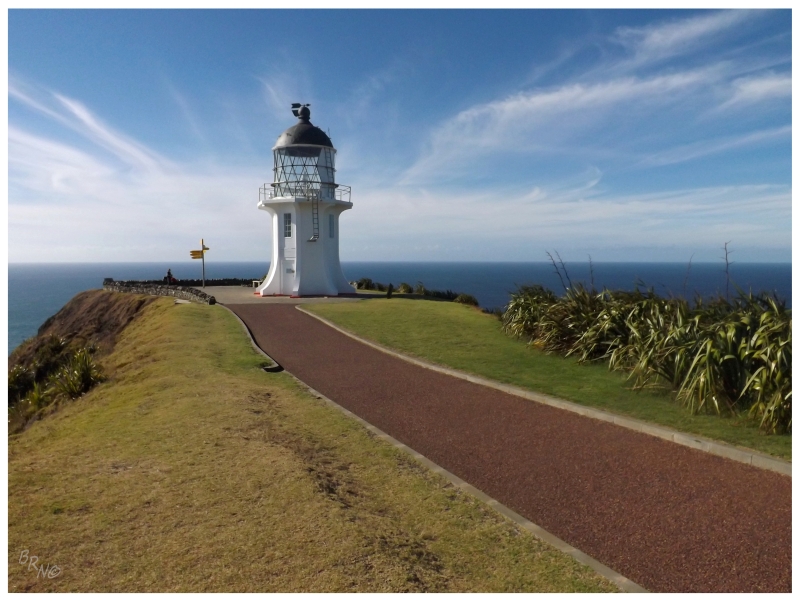A lot of people head to Morocco to visit the major cities of Casablanca, Marrakech, Essaouira, Fez or Tangier. There are also some who head here to hike in the High Atlas Mountains, or go out towards the Sahara Desert and the large sand seas of Erg Chebbi. Being in Agadir, I was already about two-thirds of the way to Morocco's southern border with Western Sahara. This also meant I was further south than all of those aforementioned destinations. Loving how far I'd already pushed from the Casablanca Airport, I contemplated one last strike into the southern mass of Morocco at maybe Guelmim, Tafaroute or Tantan, before eventually settling on Sidi Ifni. |

I really wanted to go to the disputed country of Western Sahara, but it was much more to the south, I wasn't sure if it would count as a new country, and it seemed silly to miss out on things in Essaouira and Marrakech just to cross an arbitrary border and visit their unremarkable capital (Laayoune). My globetrotting friends Andy & Phoenix would later both say that they'd count the Western Sahara as a country. Therefore, skipping it now sticks in my craw even more. Anyway, much like when I'm at Greyhound stations in America, I was enamored with the final destination of my bus. It was the number one place I'd love to go in Western Sahara, the city of Dakhla. If only I had an extra 19 hours to continue riding past Sidi Ifni. |
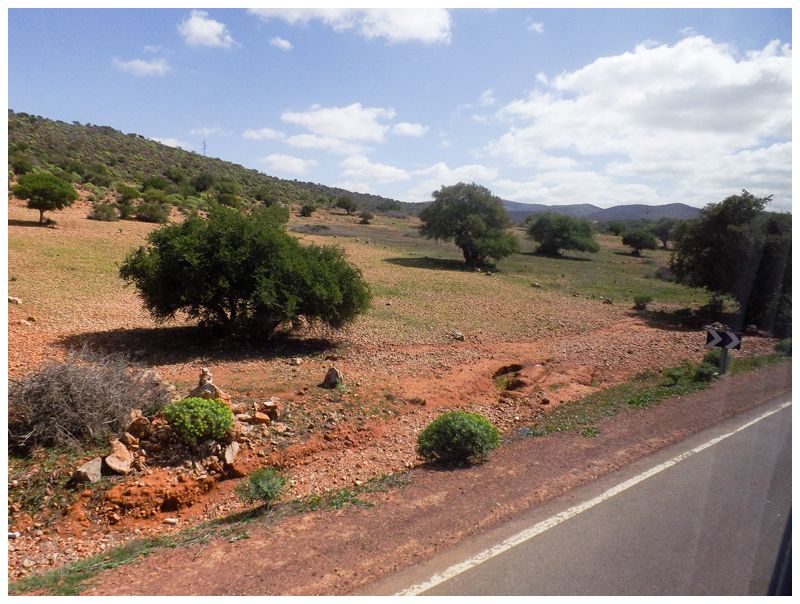
The taxi route from Essaouira to Agadir had hills and ocean, but it seemed to travel over plateaus and along the side of wide valleys. Today, this Agadir to Sidi Ifni bus route seemed to go down the middle of smaller, steeper valleys; past hillside towns and through even more arid country towards the deserts of southern Morocco. |

The bus ride from Agadir to Sidi Ifni was 4 hours including a stop in the town of Tiznit. After the bus ride from Marrakech to Essaouira stopped in the heart of a city, I was excited to see what new city would come with the Agadir-Sidi Ifni route. Instead, we stopped in a glorified rest stop on the edge of Tiznit. This was just like the time I was excited to see Benton Harbor Michigan, but then the bus stopped at a 7-11 on the edge of town. Bah! As I stood there, I wondered if anyone had ever compared Benton Harbor and Tiznit Morocco before. As for the actual rest stop, there were about 20 tajines on offer at varying prices and types of meat. The frugal man I am, I picked one of the cheaper ones and immediately regretted it as I struggled to find one mouthful of meat in the horrible mess. It was all fat, gristle and tendons. I'll save you from a picture of the gross tajine and instead show you a picture of this sassy cat who didn't appreciate me moving my chair and disturbing his slumber. So, travelling pro-tip: if you find yourself at the lunch stop in Tiznit, don't cheap out on the tajine. Then again, I don't know how much better they got since I skipped it altogether the next time through. |
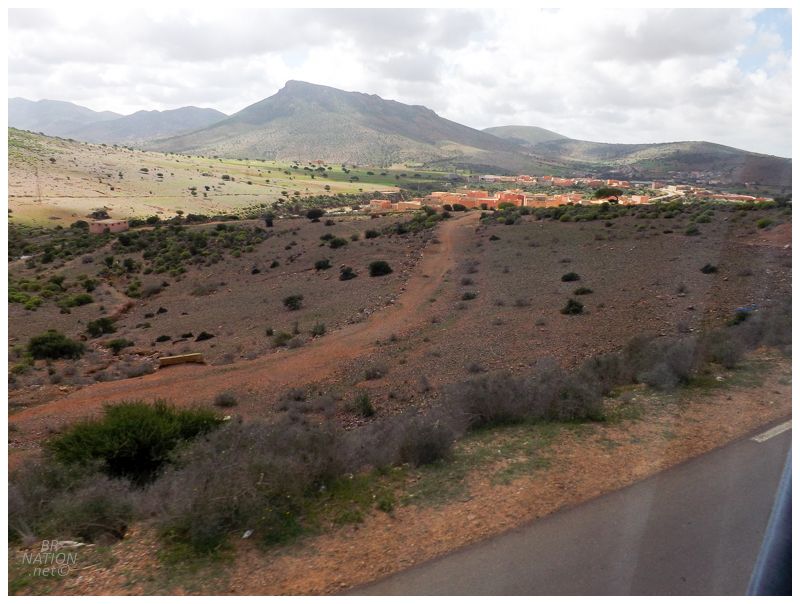
Leaving inland Tiznit, we went through more hills to get down to Sidi Ifni by the sea. This might've been the most picturesque scenery of all of my buses, grands taxis and trains in Morocco. |

Having now experienced Essaouira and Casablanca, I was prepared to rush away from Sidi Ifni's bus station, but also dreading having to hang around to buy a bus ticket to Marrakech for tomorrow. Sidi Ifni ended up being a relaxed backwater. Buying the ticket was easy and organized, and then after I steeled myself to go outside and listen to touts, I was away from the bus station without any hassle. I found myself relaxed in the quiet streets, appreciating all of the gorgeous buildings in this fine oceanic setting. |
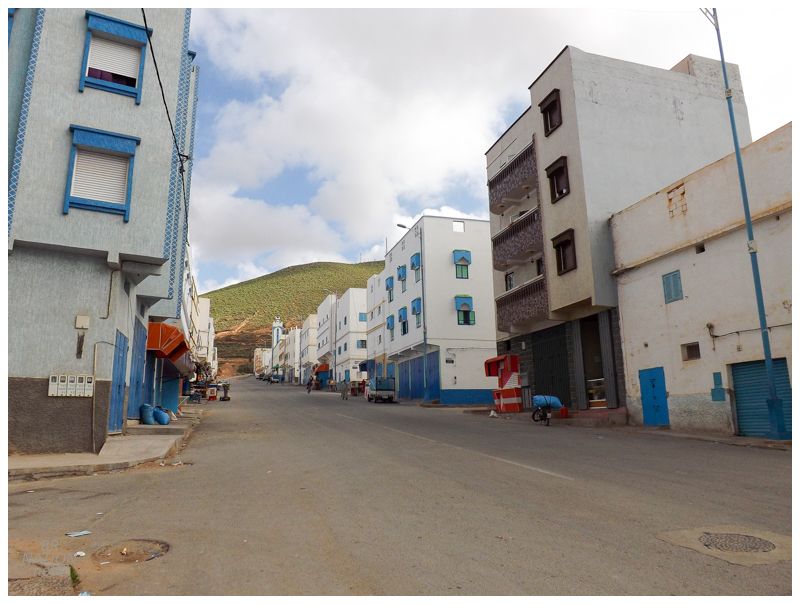
Acquired by Spain in 1860 as part of the Treaty of Tangiers, Sidi Ifni was only built up in the 1930s once Spain solidified their control. Therefore the city is unique to Morocco because it's built in the Art Deco style with a bit of Moroccan flavour. It was only in 1969 that Spain finally relinquished this city and the surrounding land back to Morocco. The Moroccans would rename some of the squares, but Spanish street signs still hang around, as do old Spanish government buildings. |

The Art Deco style could be seen in Sidi Ifni's small mosque, leftover Spanish buildings, as well as the spectacular Sidi Ifni Lighthouse. Once I saw this lighthouse in my research, it was settled that Sidi Ifni would be one of my Moroccan stops. Seeing as it was sunny when I arrived, and meeting someone on the bus who I thought might keep me busy with social activities soon enough, the first order of business at the hotel was to rush back down the street to make sure I captured and visited this lighthouse during my brief time here. |
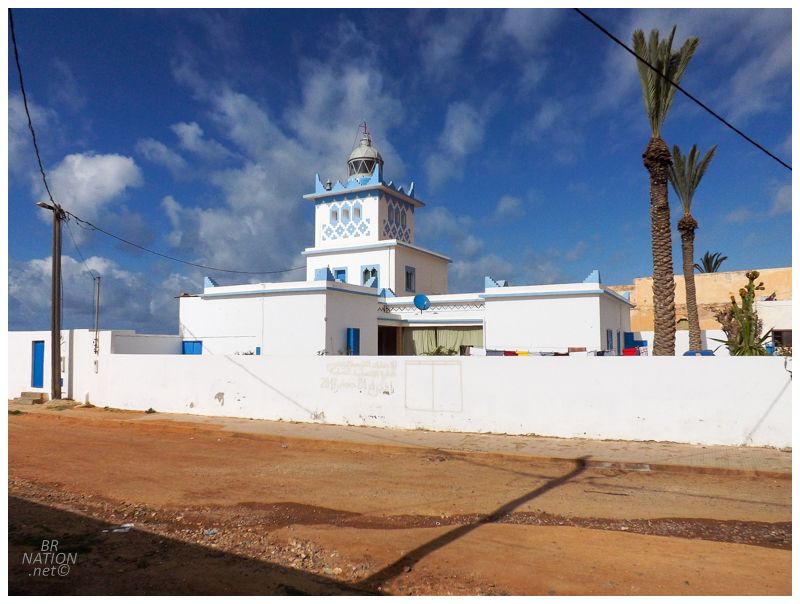
I usually struggle when people ask me my favourite lighthouse. It could be Newfoundland's New Ferolle on the Northern Peninsula or Ferryland on the Avalon. Or is it a lighthouse back home in Ontario? Like Pelee Passage along Riverside or the Thames River Range Rear in Lighthouse Cove? Or what about one in Michigan like 14 Mile Point or Rock of Ages? (Ah shoot, it's probably Rock of Ages right? Man, I really like the one in Lighthouse Cove though!) |
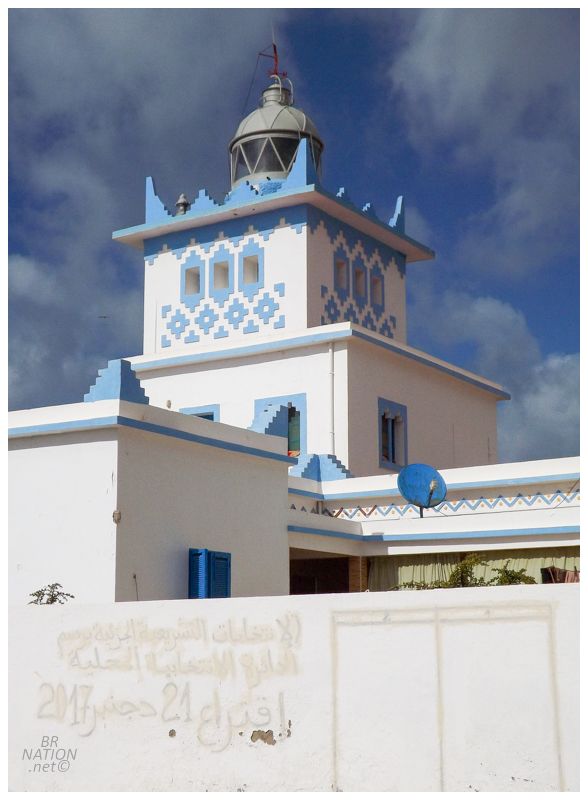
You can see how I waffle when pressed with such a tough question. As I stood here in front of the Sidi Ifni Lighthouse though, I knew this one was instantly in the conversation. A sleepy seaside town where I can enjoy the lighthouse alone and in peace? Check. Unique, gorgeous and prominent? Check, check and check! The Sidi Ifni Lighthouse was up there. If only there were some challenging logistics like a city bus or a small hike involved (another key to a great lighthouse). |
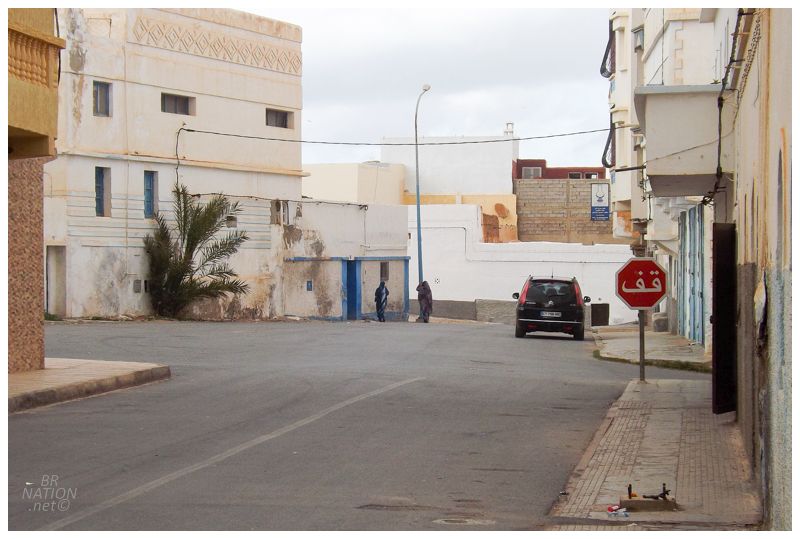
I spent the next hour walking all over Sidi Ifni, leaving the more seaside and touristy part of town behind, but never feeling unsafe even when picking up additional dirhams at an ATM. Later, while cutting through a market to take a picture of a pile of crabs, this shopkeeper offered me an entire giant fish. I laughed and told him I was staying at a hotel and couldn't do anything with a whole fish, and he simply replied with a better price, haha. |
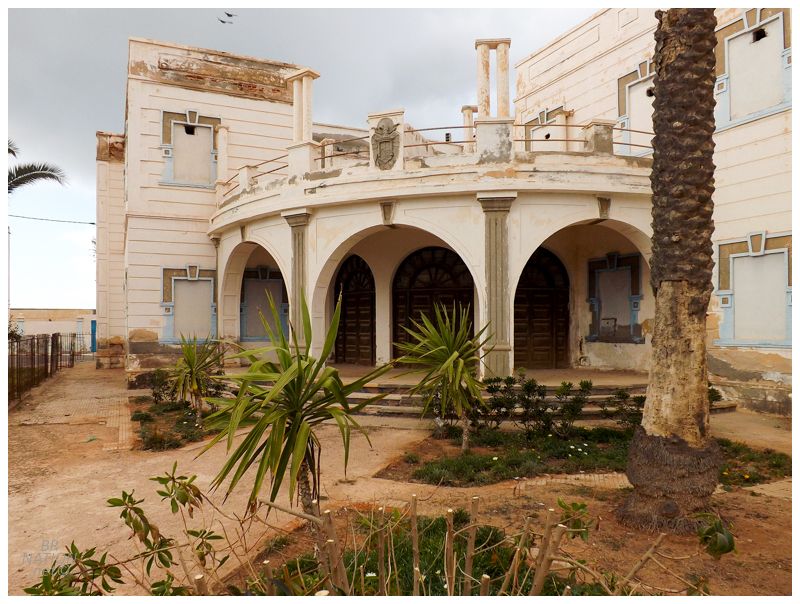
Going into this trip, I'd read about the relaxed nature of Sidi Ifni and now walking the vacant streets, I thought there was a good chance I could find my way inside the old Spanish Consulate building, situated prominently on the Plaza Hassan II (formerly the Plaza España). |
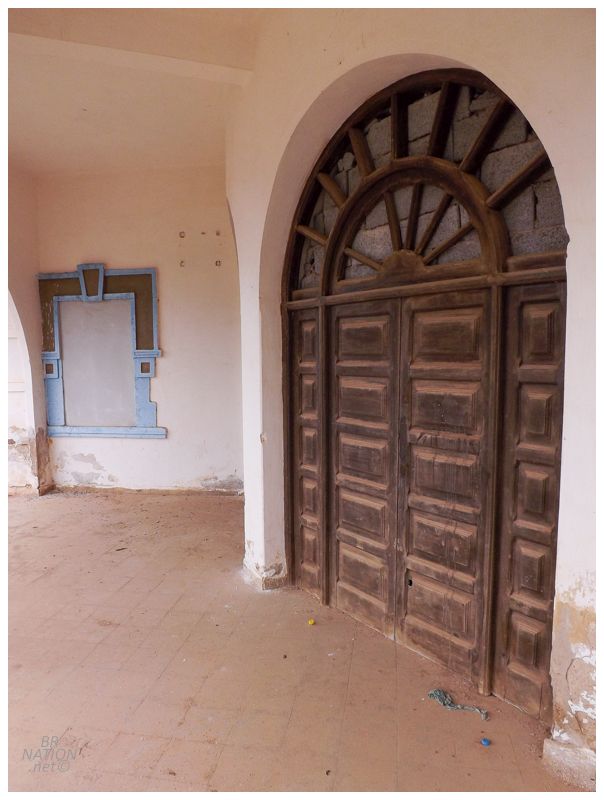
As it turns out though, they did a pretty good job sealing 'er up. Good ol' cinderblock half-moon window. Frig! |
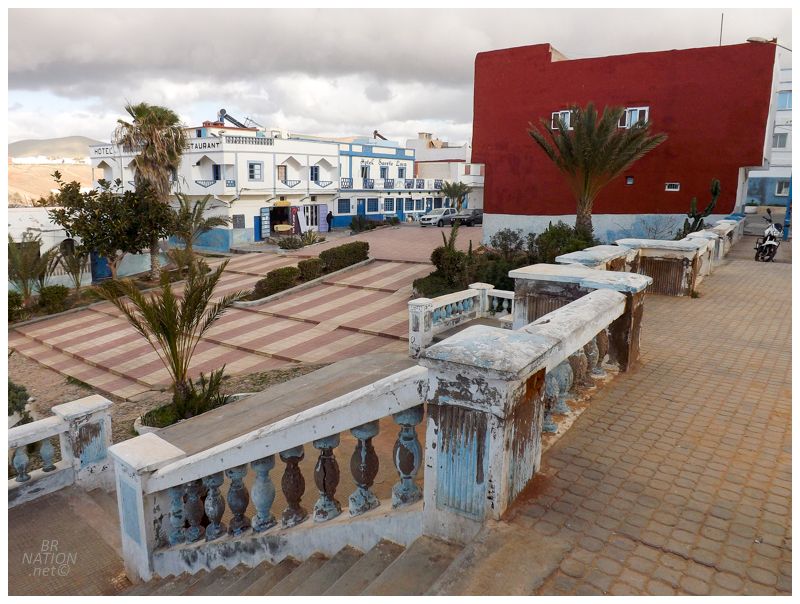
I didn't get too hung up on the consulate being sealed since Sidi Ifni was so pleasant to walk and a fantastic evening was settling in. A long, brick plaza went past a few fountains and ledges, leading to this grand staircase down to a pedestrian incline that spilled towards the ocean. The hotel which I stayed at is located in the middle of the above picture. |
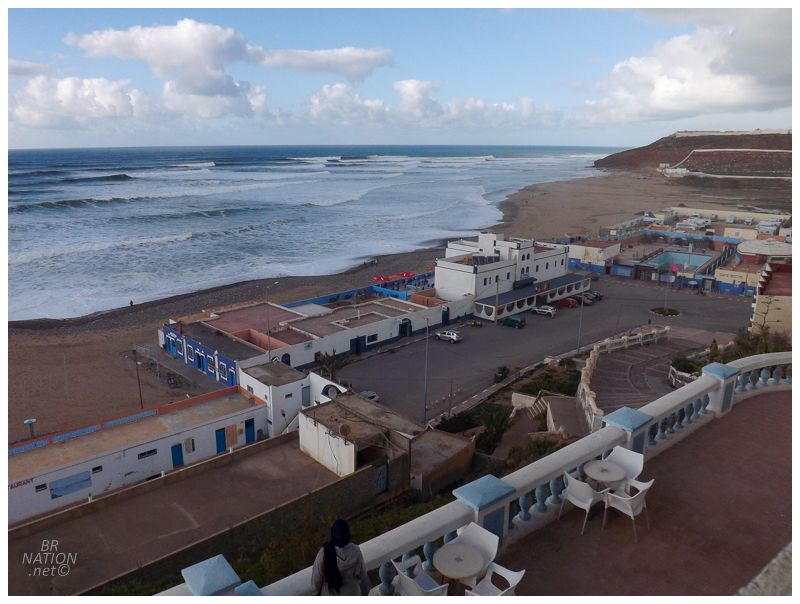
Throwing it back to the friend I made on the bus, it was after I loaded my bike/golf bag into the luggage hold, that I walked on to the bus and took a seat somewhere in the middle. "Was that a surfboard? Heading down for the waves of Sidi Ifni? I have my surfboard." I was a bit confused as I didn't see any surfboards down in the hold, but this man's name was Marius and I would soon learn that there apparently are inflatable surfboards? After having a chat on the bus, having actually made a friend for the first time in all of my travels, we met back up for dinner. Since it was a little early, we headed up to the tallest terrace in town, where we were able to grab a cold beer and peer out over the Atlantic with only one other couple on the whole roof. |

Marius quickly took to making fun of the number of pictures I was shooting, seeming to be the type of guy who prides himself on showing how immersed his is in the moment by not taking any pictures himself. That was all fine and good, but I wasn't missing these sunset shots of the Sidi Ifni Lighthouse. |

Dinner was at a dimly lit restaurant where the number of people indicated that this place must be good, or maybe it was the only place in Sidi Ifni, haha. Before even finding out if things were good, awkward me was startled by the friendly chef and because I'm so nervous, I half-jumped out the way to which the chef told me, "don't worry, don't worry, I'm not a terrorist" with a firm hand on my shoulder. Oh jeez, I'm just easily startled! As for the food, there's a reason I said that lamb tajine was "up there" with the best meals I've had on this trip. This patella was also unbelievable. A fancy take on a traditional Moroccan meat pie with breaded fish, cheese and green olives inside; I scarfed this thing down for the first few bites because it was so tasty, then decided to slow down and savour things because I wanted it to last forever. |

Following dinner, Marius asked if I wanted a night cap and I thought we were headed back up to that sleepy terrace. Instead we headed down to the tiny seaside bar which he apparently popped into earlier. I had seen the bar's Heineken sign outside, but it seemed like one of those places which isn't open, or is tiny, or who knows what's going on. Boy was I glad that Marius happened to check out this place as this was clearly the local bar and I loved the cast of characters. First, Moroccans do this thing where they pour tea by raising the kettle away from the cup to show off the long stream - and here, some guy was instead doing this with every pour from his bottle of rosé. Then there was the bartender who immediately switched to being one of the patrons as some other guy appeared. Then there was a guy who looked to be about 70 and in traditional garb...with about 12 empties in front of him and knocking back the 16 dirham ($2CAD) Stork beers quicker than us. Lastly there was a gruff, angry looking dude, who scooped up a stray cat that wandered into the bar, flipped the cat over, and cradled the kitty in his arms so he could rub the cat's neck and chest, all the while continuing his intense conversation with his friends as no one batted an eye. |

Marius said a couple of funny things in that he randomly brought up Sudbury - "every country has an industrial wasteland city, and in Canada, that's clearly Sudbury" - just a month after I visited. He had seen this side of one of our northern jewels by riding trains through Canada, but he needed some explanation when it came to the Colt 45s "we drink" and the 40s he had in America. Apparently he didn't come across any Colt 45s in America - they're much more of a cheap drink of choice in Canada - which left him confused as to why Americans drink 40s and Canadians drink 45s. It's then that I realized and had to explain that the 45 in Colt 45 doesn't refer to the ounces, haha. This is clearly what people are talking about when they say you need to travel the world to expand your mind and learn about different cultures. I now have a "travel the world" Pinterest'esque cursive script in my living room. I appreciate it while sipping Colt 45. After only three Storks, Marius wanted to call it a night and we headed back to the hotel. I popped up to the rooftop terrace to appreciate the last of my only night here in Sidi Ifni. |

Not staying out too late, it was easy to get up early and go for a bike ride in this obscure outpost. Sidi Ifni was kind of a bust though, as I found myself riding some mediocre banks outside the bar that Marius and I visited last night. Meanwhile, the cleaning staff was coming and going and it was fun to sneak glances at the familiar interior. Afterwards I rode along the dilapidated beachside promenade lined with the campers of European tourists down here to escape the winter. I quite enjoyed rolling by as a giant white dude on a BMX bike, while some German or French woman sleepily pushed open her screen door at 7 in the morning and didn't expect such a sight. I then ate shit grinding a flat ledge, lol. |

There were some marble ledges along that promenade, but otherwise Sidi Ifni was a lot of hills and little to ride. Deciding to head down one last road, I finally found a street quarter that was pretty damn good. If only I had more quarterpipe tricks after flying down the street and through the glass-ridden park to hit it. |

Taking too long to figure out the downhill speed to hit that street quarter, I was in a bit of a rush to take my bike apart once I got back. There was still time to peer out from my balcony though, jealous of how Europeans can just pop down here in the winter and camp in such great and interesting conditions. |

My shower had a beautiful Moroccan light, haha. |

And some pretty snazzy interior tiles, all for 16 Euros. I guess this place has been around since the time of Spanish occupation and some people give it bad reviews because of its age, but I would surely stay here again. It was more than fine (if only Sidi Ifni had more to ride). |

Rushing down to catch my bus to Marrakech, I got there early and the bus wasn't even in Sidi Ifni yet. That meant it was time to grab another little coffee and sit out in the street, relaxing and watching the world pass by. No one paid me any mind or bothered me with any offers. If I was going to be late getting to Marrakech, sitting here and reading my book about the American South would certainly work. Continue to Part 7... |
